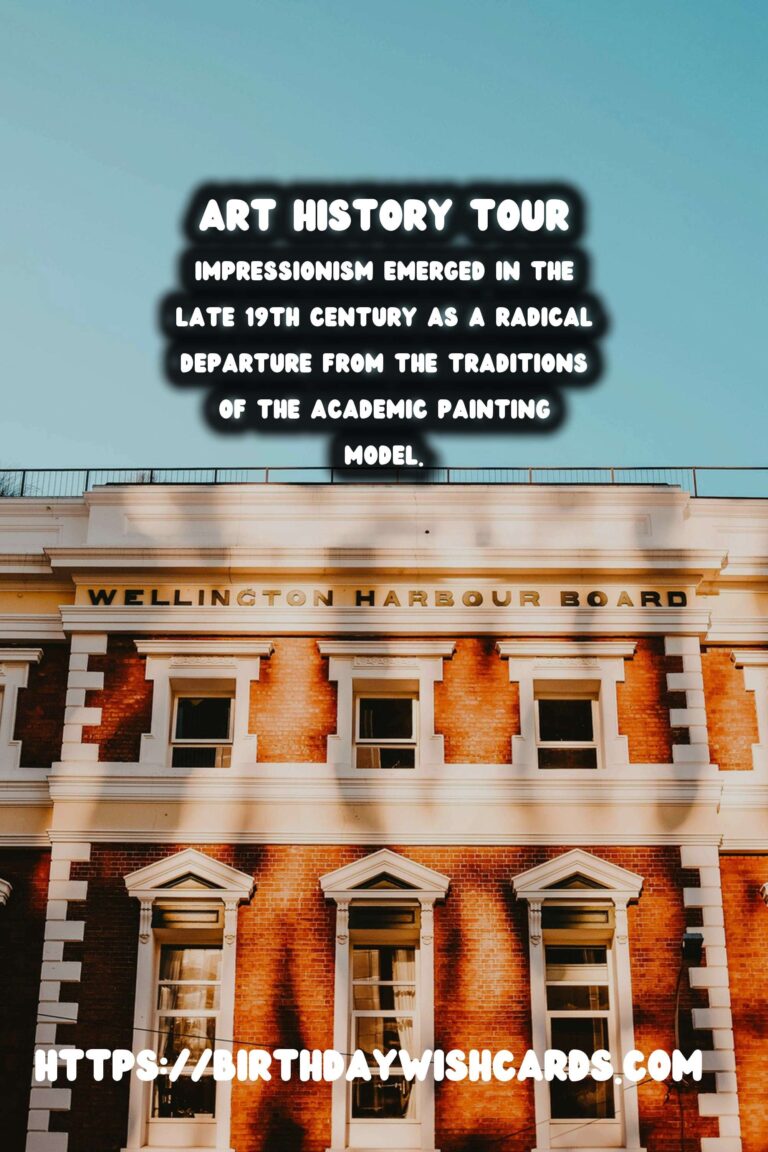
Art is a window to the past, reflecting cultural shifts and societal values. Among the myriad art movements, Impressionism and Surrealism stand out as pivotal points in art history, marking profound transformations in artistic expression and perception. This article takes a deep dive into these influential periods, offering insights into their origins, characteristics, and key figures.
The Dawn of Impressionism
Impressionism emerged in the late 19th century as a radical departure from the traditions of the academic painting model. Artists sought to capture the fleeting effects of light and color, often painting en plein air (outside) to portray scenes as they observed them in real-time. Rejecting the meticulous detail of prior movements, Impressionists favored broad, visible strokes and vibrant palettes.
Claude Monet, Pierre-Auguste Renoir, and Edgar Degas were among the luminaries of this movement. Monet’s Impression, Sunrise, from which the movement takes its name, epitomizes this innovative approach.
The Birth of Surrealism
Surrealism surfaced in the early 20th century, drawing inspiration from Dadaism and the emerging field of psychoanalysis. Surrealists explored the unconscious mind, creating fantastical, dream-like landscapes that challenged the boundaries of reality. They used unexpected juxtapositions and bizarre imagery to provoke thought and explore the depths of human imagination.
Salvador Dalí, René Magritte, and André Breton were central to this movement, each contributing uniquely to its legacy. Dalí’s The Persistence of Memory remains a quintessential surrealist masterpiece, renowned for its melting clocks and enigmatic themes.
Contrasting and Comparing Impressionism and Surrealism
While both movements sought to push the boundaries of what art could be, their methods and intentions differed significantly. Impressionism focused on the accurate depiction of light and natural scenes, capturing transient moments. In contrast, Surrealism delved into the abstract and the uncanny, bringing to life the strange and wonderful realms of the subconscious.
Both movements, however, challenged viewers to see the world in new ways and laid the groundwork for contemporary artistic expressions.
Legacy and Impact
The legacies of Impressionism and Surrealism endure, influencing modern and contemporary art movements. Galleries worldwide, from the Musée d’Orsay in Paris to the Museum of Modern Art in New York, showcase these works, drawing millions of visitors each year who are captivated by their innovation and beauty.
Moreover, both movements inspire today’s artists and creatives across various disciplines, reinforcing art’s timeless relevance.
Embarking on an art history tour that covers these significant movements can provide profound insights into their impact on society and how they continue to inspire creativity and innovation.
Planning Your Art History Tour
When planning an art history tour, consider starting in Paris where Impressionism was birthed. Visit iconic locations such as the Musée d’Orsay and Monet’s gardens in Giverny.
For a surreal experience, a visit to the Dalí Theatre-Museum in Figueres, Spain, offers an immersive look into the mind of one of Surrealism’s most celebrated figures.
These tours not only deepen the understanding of these movements but also allow participants to experience firsthand the environments that inspired such revolutionary art.
Art is a window to the past, reflecting cultural shifts and societal values. Impressionism emerged in the late 19th century as a radical departure from the traditions of the academic painting model. 


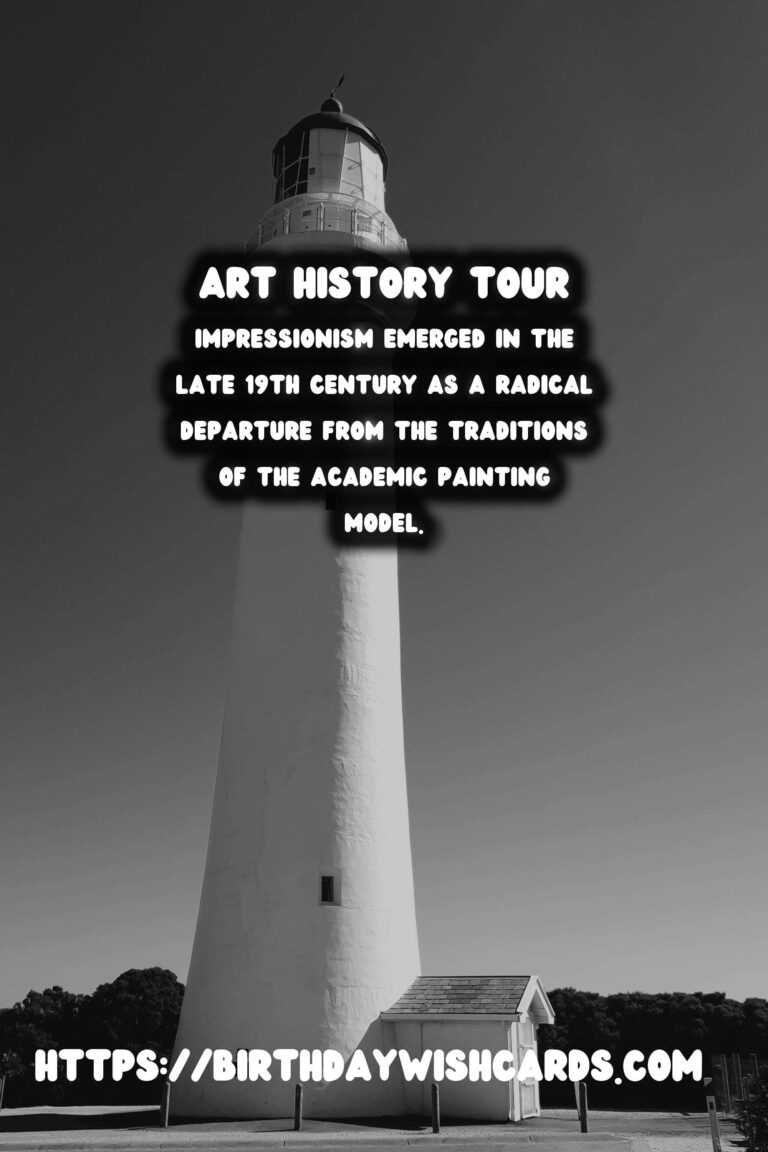
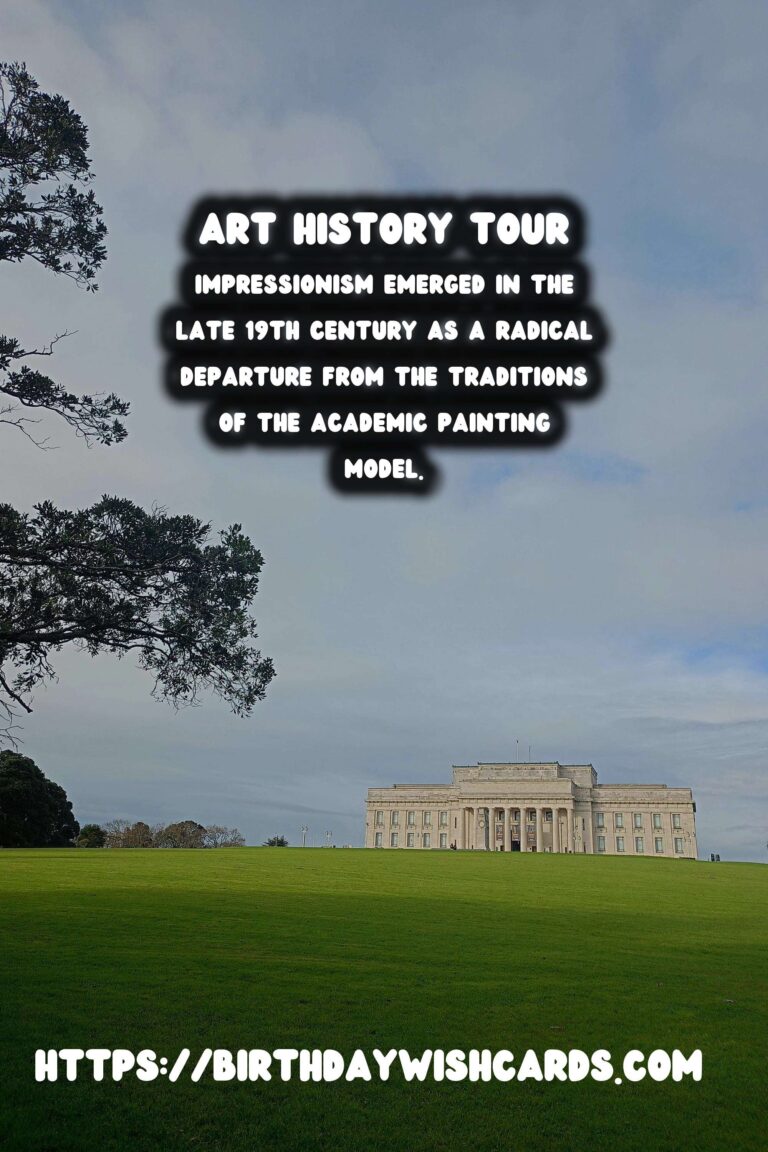
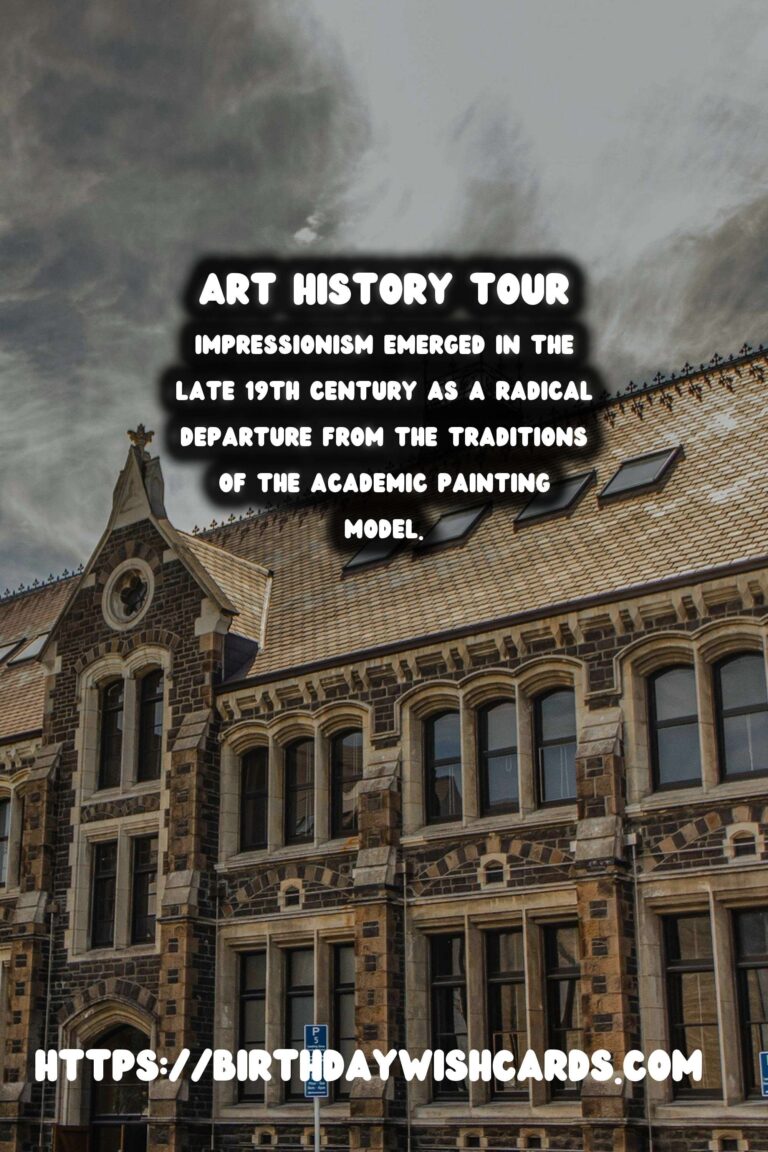

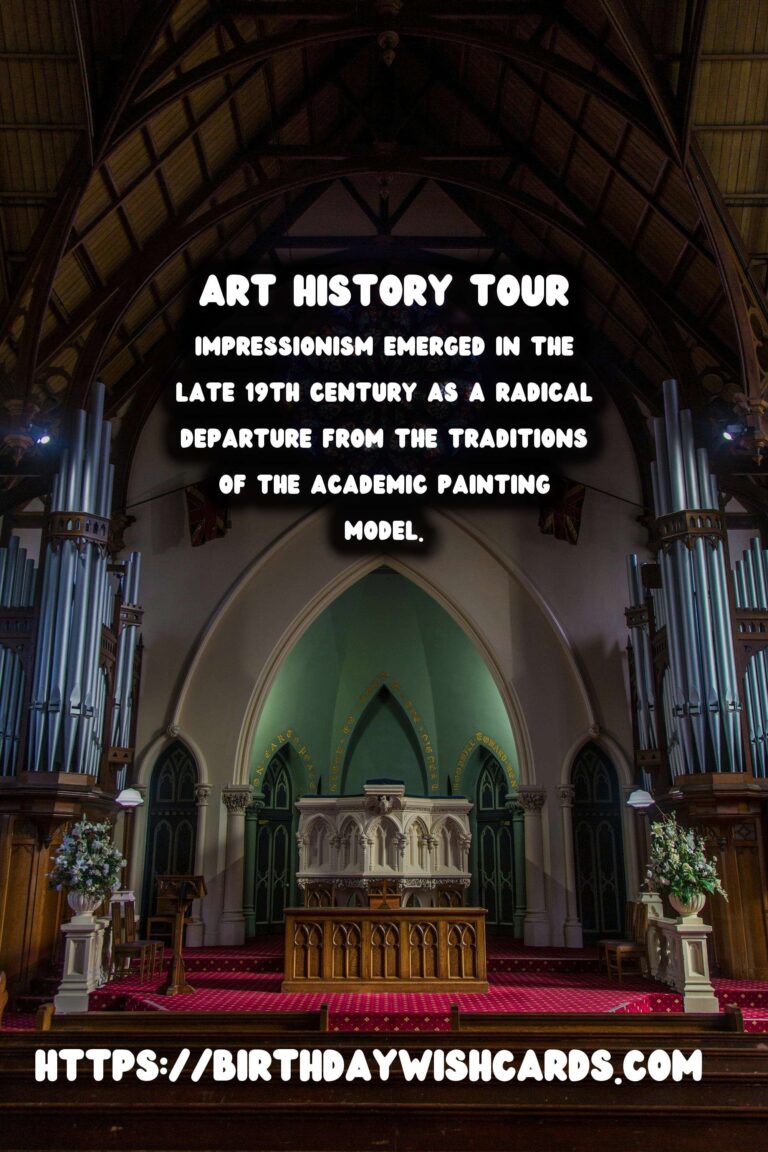


#ArtHistory #Impressionism




